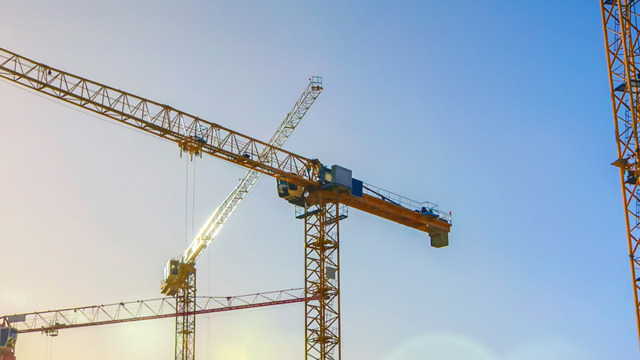A record year for global unlisted infrastructure fundraising
2022 was another record year for global unlisted infrastructure fundraising, with funds raised in the first three quarters of 2022 exceeding the full year for 2021.[1] This was despite an increasingly uncertain economic climate. Whilst there are now near-term headwinds impacting all sectors, it is also interesting to note Fitch Ratings' view that global infrastructure assets have been the least affected by the weakening macroeconomic environment.[2]
Global Infrastructure Hub's recent report, Infrastructure Monitor 2022, concludes that unlisted infrastructure remains an attractive asset class for long-term private investors, notwithstanding the impact that rising interest rates is having on valuations.
Infrastructure M&A in New Zealand
In New Zealand, a number of notable M&A deals moved forward in 2022 in the unlisted infrastructure space. In particular:
-
QIC Private Capital was selected as preferred partner to acquire 50% of Vector Limited's New Zealand and Australian metering business;
-
Amber Infrastructure Group agreed to acquire various New Zealand infrastructure assets from Morrison & Co;
-
three mobile tower deals were signed:
-
InfraRed Capital Partners and Northleaf Capital Partners acquired an 80% stake in Vodafone New Zealand's mobile tower assets;
-
Ontario Teachers' Pension Plan Board (OTPP) acquired a 70% stake in Spark New Zealand's mobile tower assets; and
-
the towerco created by the Spark/OTPP deal agreed to acquire 2degrees' mobile tower assets; and
-
-
in renewables, BlackRock Real Assets agreed to acquire solarZero, a New Zealand provider of solar, battery storage and energy services.
These trades reinforce the view that New Zealand can be an attractive destination for international infrastructure investors, when there are deals to be done or projects to develop. The invariable need for consent from the Overseas Investment Office ensures a somewhat longer period to completion as compared to countries that have a less-fulsome screening of foreign direct investment, but it clearly does not act as a blocker to successful M&A processes being run with international infrastructure investors.
The mobile tower and metering deals also demonstrate what has already been proven elsewhere: The potentially powerful impact of unlocking value in existing infrastructure assets, both in terms of value accretion, given the attractive valuations that long-term infrastructure investors can be willing to pay for carved-out assets, and in terms of freeing up capital to fund business expansion.
What's in store for 2023?
Greenfield projects
Looking forward in 2023, we expect that the progression of greenfield projects will be a focus for relevant private sector investors, particularly in energy generation and decarbonisation initiatives. In public infrastructure, private sector equity investment remains unlikely under current settings, as the Government continues to take forward projects largely on balance sheet.
In energy generation, a variety of wind, solar and geothermal projects are progressing at various stages of development or construction. We are also seeing increased activity in battery energy storage systems (BESS), with energy storage becoming increasingly relevant as the level of intermittent generation in the system increases. Meridian recently announced that it would commence construction of a large-scale BESS project in the first quarter of 2023, being a 100MW system at Ruakākā.
In December, the Government delayed its decisions on the NZ Battery Project to 2023, following the completion of Phase 1 feasibility studies. The Lake Onslow pumped hydro scheme is being considered as a government-mandated solution to dry year risk, alongside other potential solutions. Market participants await a decision, with critics keen to point out the likely cost of the project and the impact that a decision to proceed would have on private-sector investment in new generation.
Transpower's updated grid connection process
A recent notable development in renewable energy was Transpower's November 2022 update to its process for managing enquiries for grid connections of up to 500MWs. This follows a significant increase in connection enquiries in recent years. A new queuing system has been implemented. Developers will also be required to pay an application fee at the start of the investigation phase, based on the MWs of the proposed connection and capped at $400,000. The requirement for this fee may well rationalise the large number of developers that are seeking to take forward solar projects or to create option value by securing land and grid connection.
Offshore wind consultation
We also look forward to the development of a regulatory regime for offshore wind in New Zealand, which the Government has committed to establish by 2024. A number of parties have now announced that they are planning or are in feasibility studies for proposed offshore wind projects here in New Zealand. A consultation issued by the Ministry of Business, Innovation and Employment in relation to development-period activities closes for submissions in April 2023. A further consultation on construction, operations and decommissioning is due to take place later this year.
Materially large electricity contracts
The Electricity Authority's (EA) Code amendment prohibiting 150MW-plus electricity contracts relating to physical consumption, unless certain conditions are met, will also be in the spotlight in the coming months. We now await the EA's response following its consultation on the urgent Code amendment made in August 2022, which expires in May 2023. Putting to one side the policy arguments for and against the EA's intervention, there is significant uncertainty as to the types of contracts that are caught by the amendment and regarding the carve-out for PPAs entered into in connection with new-build generation.
The amendment imposes material disclosure requirements on generators in relation to contracts within its scope, whether or not clearance is required. Should the EA determine to proceed with a permanent Code amendment, it will be critical that its scope is clearly defined and developers will be keen to understand the full extent of the carve-out for new-build generation.



